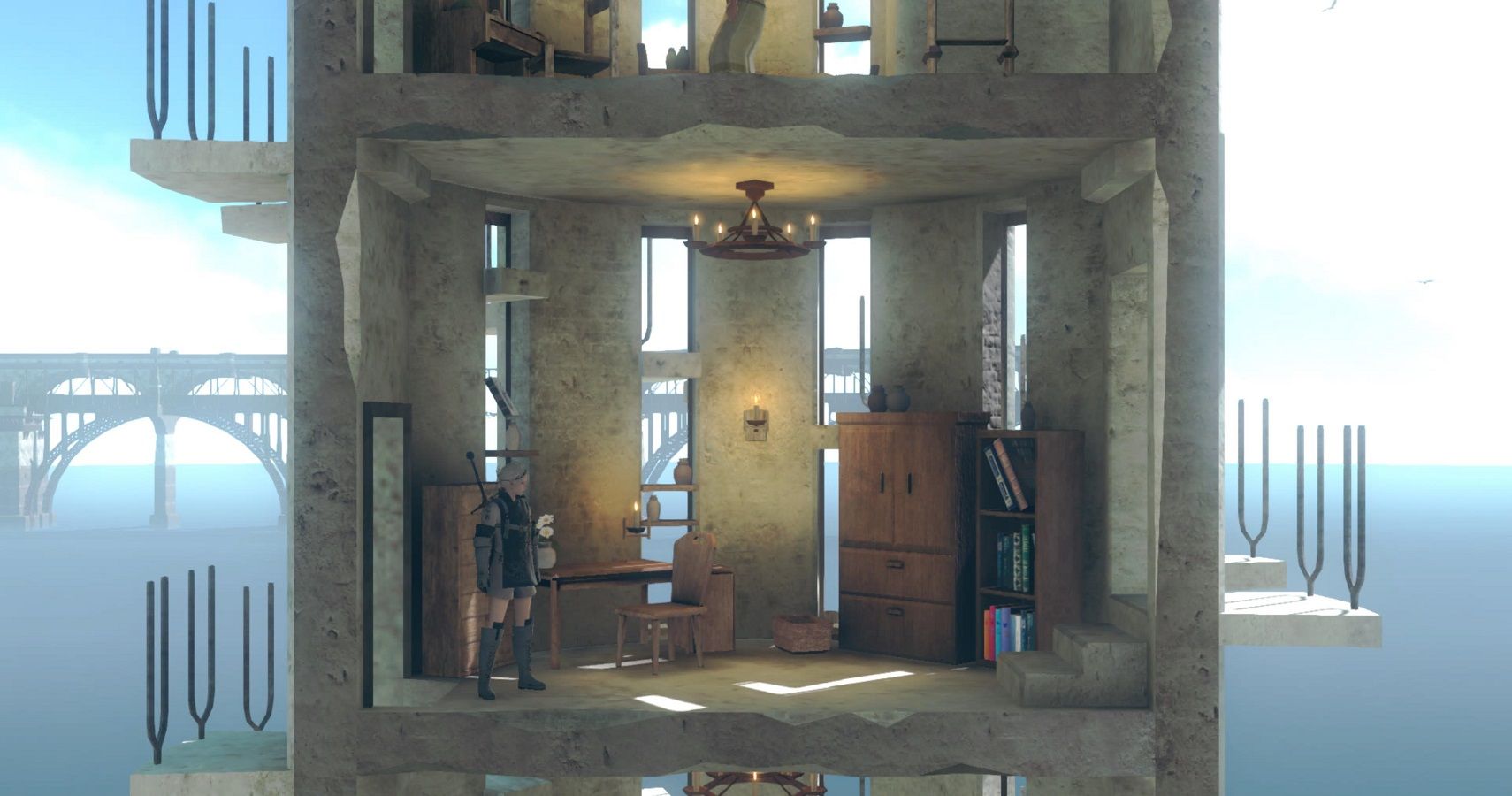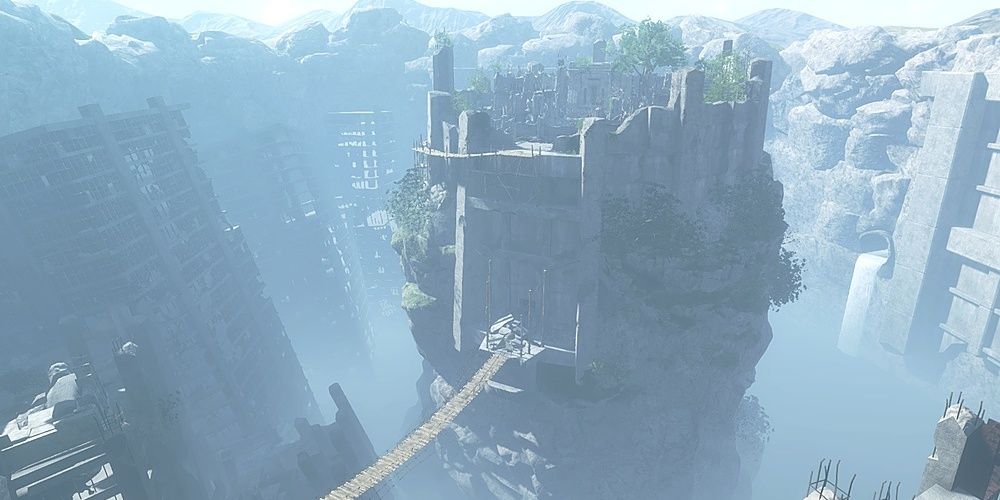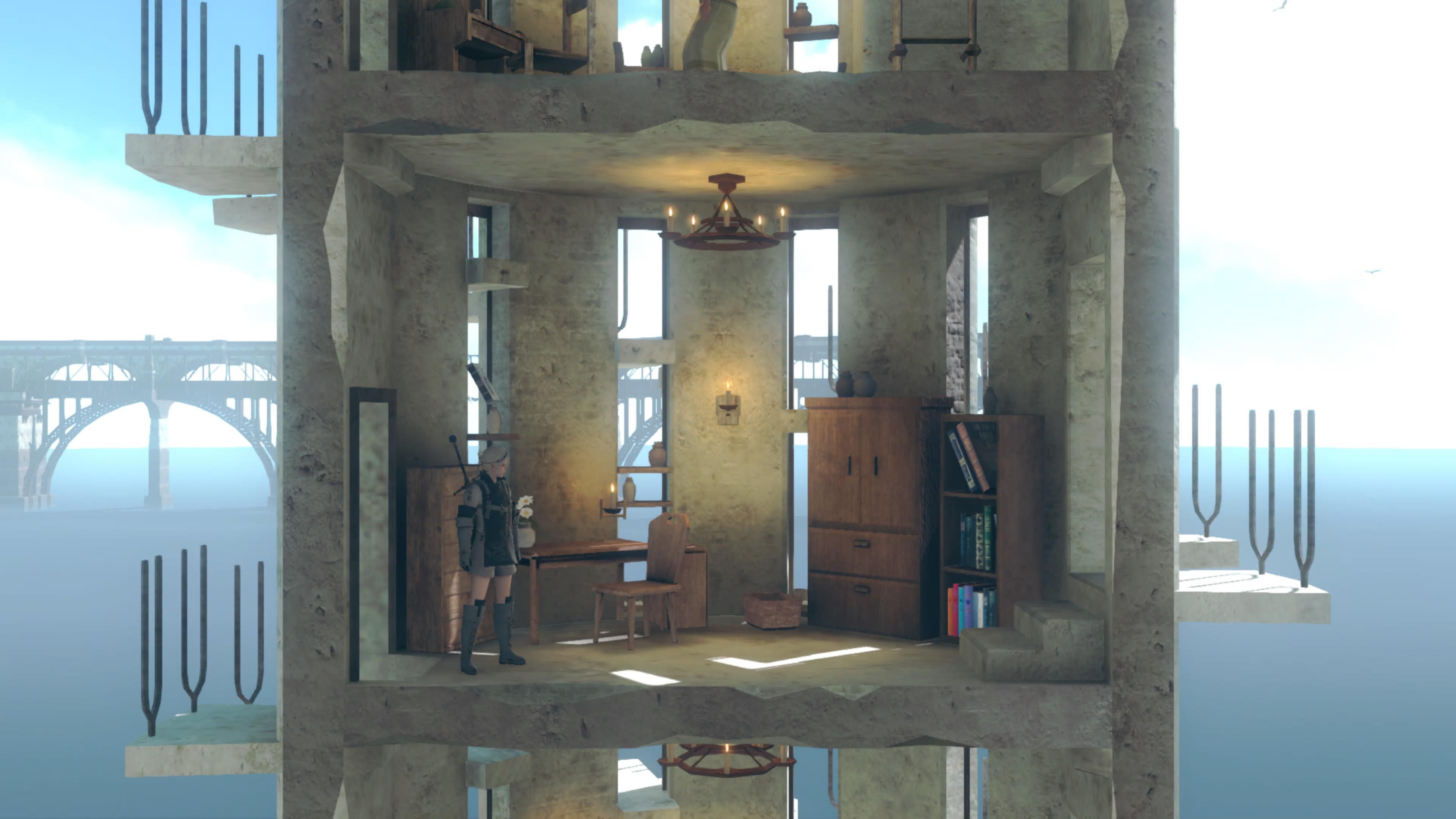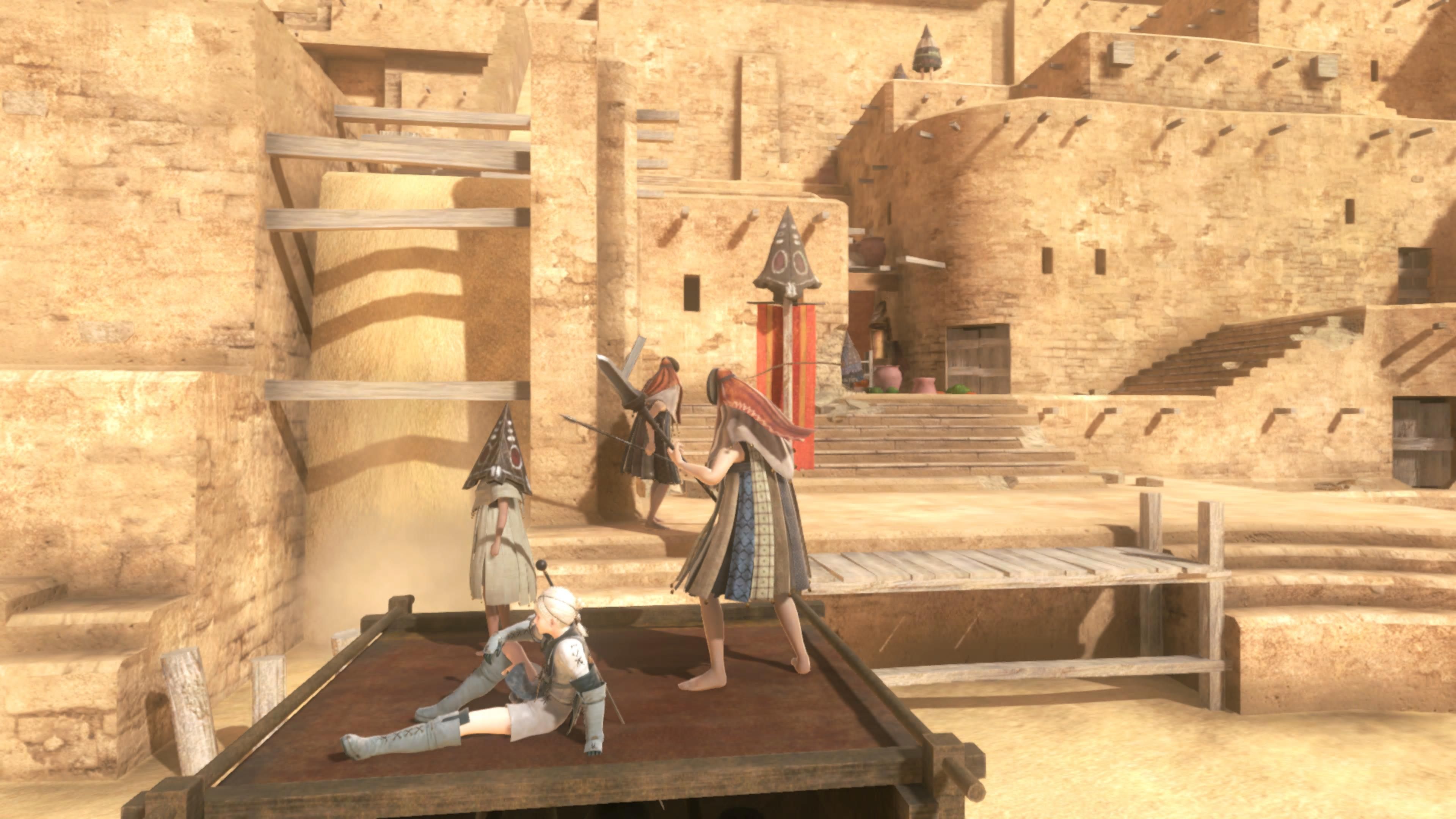Graphics in video games have evolved to such a point that basically every game is beautiful these days. Some indie titles, either because of budget or design choice, have a more dated or stripped back approach, but for the most part, everything is gorgeous. Whether it be the bustling streets of New York City in Spider-Man, the Wild West vistas of Red Dead Redemption 2, or the dark and terrifying beauty of Demon’s Souls, we’ve reached the point where pretty graphics are the standard, with few being noteworthy. It’s like being excited that a game uses the X button.
However, Nier Replicant is beautiful in its own unique way, reminding us that photorealism is not always the gold standard. Graphically, Nier is not at the top of the gaming tree in terms of raw technical specs, but it doesn’t need to be, because it looks like an exquisite diorama. If you’re British, like me, you’ll mostly know dioramas as those weird things they always have to make on American television shows. And if you’re American, well, I’m not sure. Do you really have to make them at school, or is that just a TV thing, like rushing out the door and leaving a huge breakfast on the counter? Answers on a postcard, please.
Anyway, dioramas are much more interesting than a maybe-fictional school assignment. They have existed since the 19th Century, and they’re basically three-dimensional models of any given place. They’re typically used by museums, town halls, or libraries, but there’s not really a restriction. The Aardman Animations movies are made within diorama-style sets too.
While they strive for accuracy and are vaguely to scale, they’re supposed to capture the tone and feeling of a place. Obviously, it needs to look like the location it is replicating, but allowing you to imagine the reality of the diorama is more important than actually depicting it. That’s why dioramas typically build a story around one or two key details and are otherwise smaller and sparse - they’re less concerned with technical precision on a microscopic level and more interested in constructing a narrative brick by brick. Nier Replicant’s set design, less detailed and graphically astute than, say, Final Fantasy 7 Remake, takes this ‘less is more’ approach by capturing the essence of each location with a few precisely chosen details.
Of course, some dioramas are ultra detailed and make sure every single inch of the model is to-scale, but these aren’t necessarily in the spirit of what a diorama is - they’re like the elite upper percentile. You can also get full scale dioramas too - typically of stuffed animals at a natural history museum - but Nier Replicant isn’t really that either. It’s the lack of detail that makes Nier so beautiful, the melancholic minimalism and the brightness of the negative space.
The best example of this is probably the Lighthouse at Seafront. As you ascend the tower, the outer wall is stripped away, letting you peer inside the faded white building while you climb. The HUD melts away in this section too, meaning there’s nothing to see except you, the Lighthouse, and how the Lighthouse Lady lives.
In fact, all of Seafront is a wonderful example of this diorama motif in action. While not the most extraordinarily detailed setting in the history of gaming, we instantly know what sort of town it is as we wander through its sun bleached streets. From the white clay walls to the gentle shores, Seafront feels like a Mediterranean paradise from the moment you enter it. Then you wander to the beach, and see the glowing sands teeming with yawning, rolling seals.
Seafront is not the only place that feels especially diorama-esque either. Your home village, with a few sparse and eroding landmarks in amongst the meadows immediately exemplifies the peaceful farmstead it represents, while one sand river tour of Facade, watching the masked strangers sheltered in the crags of the cliffs, while the wheels spin in the background, makes it feel like it was all made by an - especially talented - engineer.
Of course, other games have brilliant level design too. Nier Replicant is not alone in creating settings that look great, that instantly inform you of their themes, or that are fantastic to just run around in. But there's something unique about the way Nier Replicant has been constructed, and about the aesthetic it is channelling, that makes it feel especially like a diorama. It's the washed out colouration, the open rejection of details in favour of embracing the heartbeat of a place, making each setting feel lonely, bittersweet, and beautiful. Like connected rooms of a museum exhibit, each space has new secrets, new sights, and all feels like one part of a disparate whole.




